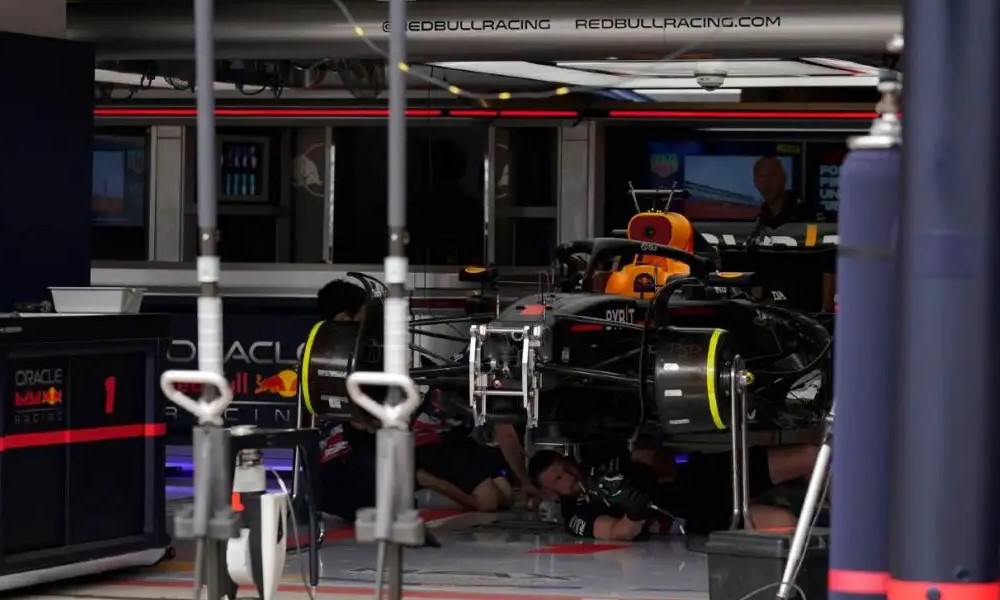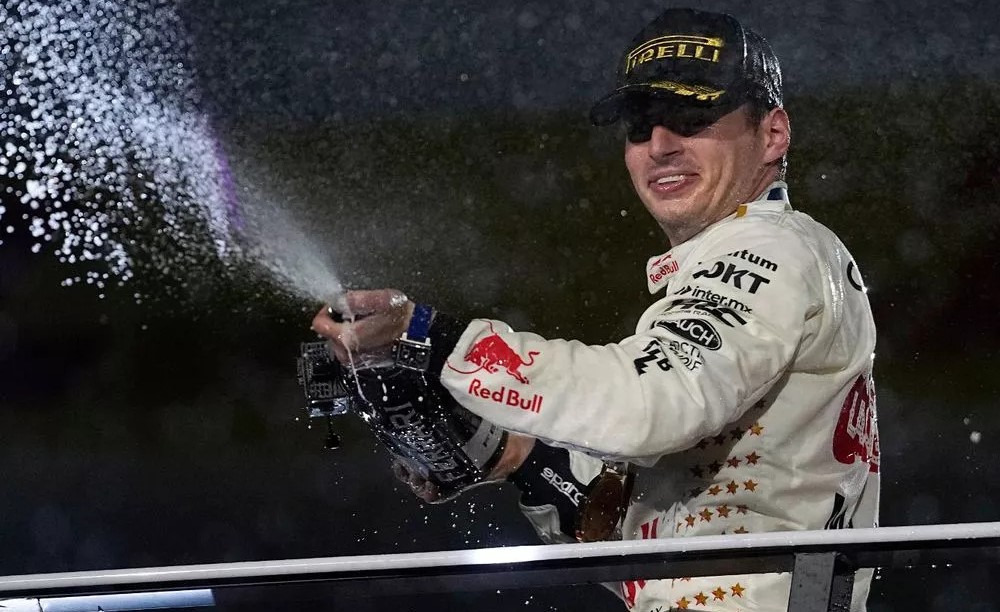The controversy surrounding Red Bull front ride height device was a point of discussion during the United States Grand Prix weekend with many questioning how the adjustment system works and why the FIA decided not to hand any penalty.
The device, often referred to as a “bib adjustment trick” raised eyebrows among competitors and fans alike, leading to questions about its compliance with FIA regulations and the implications for competitive integrity in the sport.
Despite the swirling controversy, Red Bull did not receive any punishment from the FIA prompting a deeper examination of both the device’s functionality and the regulatory framework governing its use.
The Role of Ride Height in F1
At the heart of this debate lies the importance of ride height in Formula 1 racing. The ride height of a car significantly influences its aerodynamic performance, which is critical for achieving optimal speed and handling on track.
In essence, teams strive to set their cars as low as possible to maximize downforce during qualifying laps while ensuring stability during races when fuel loads increase.
A lower ride height can improve grip and cornering speed, but it must be balanced against the risk of bottoming out or exceeding the allowable wear on the underbody plank—a key component in F1 design that ensures safety and compliance.
How the Red Bull front ride height device works
Red Bull’s RB20 car features a mechanism that allows for adjustments to the front ride height, a fact confirmed by team representatives.
The device in question is located at the front of the RB20, specifically referred to as the ‘bib’ or ‘T-tray.’ This component plays a crucial role in managing airflow under the car and contributes significantly to downforce.
The controversy arose from reports ahead of the United States Grand Prix suggesting the Red Bull front ride height device could potentially allow for adjustments even after qualifying—something strictly prohibited by FIA regulations.
However, the Milton Keynes-based outfit maintains that the device is not accessible once the car is fully assembled and ready for track action. A team spokesperson stated, “Yes, [the device] exists, although it is inaccessible once the car is fully assembled and ready to run.”
However, Red Bull team principal Christian Horner asserted that their device is not unique and that similar mechanisms may exist within other teams’ designs.
Horner explained that accessing their adjustment tool requires significant disassembly of components within the car—namely removing pedals and panels—making clandestine adjustments nearly impossible under race conditions.
The adjustment screw resides within the cockpit under the heel support area and to access it, Red Bull’s mechanics would need to undertake considerable disassembly of various components in the car’s front end.
This complexity serves as a deterrent against any attempts to manipulate ride height secretly during critical race moments.
FIA’s Investigation and Findings
Parc ferme regulations are designed to ensure that teams cannot make significant changes to their cars after qualifying. Under these rules, only specific adjustments are permitted such as altering front wing angles and tire pressures.
The FIA has made it clear that any modification to front bib clearance during these conditions is strictly prohibited. However, they also acknowledged that they had not received evidence of any team employing such a system illicitly.
FIA’s technical director Nikolas Tombazis described the situation as a “non-story” following transparency regarding the Red Bull front ride height device.
He noted that while there was no indication of wrongdoing by Red Bull or any other team, they decided to implement procedural adjustments to prevent any potential misuse in the future. This includes sealing off any devices that could allow for unauthorized adjustments during parc ferme conditions.
Despite this reassurance from the FIA, skepticism persists among some teams and observers. McLaren CEO Zak Brown voiced doubts over the concept behind the Red Bull front ride height device and how it functions, suggesting that it does not adequately address concerns about its potential use for competitive advantage.
Implications for Rival Teams and Future Regulations
The implications of this situation extend beyond just Red Bull Racing; they highlight a broader challenge faced by the F1 governing body: maintaining regulatory clarity while fostering innovation among teams.
As technology continues to evolve rapidly in motorsport, ensuring compliance with established rules becomes increasingly complex. The balance between allowing teams to innovate and preventing unfair advantages remains a delicate one.
In light of these developments, it becomes evident that while the Red Bull front ride height device may raise eyebrows among competitors and fans alike, its legality hinges on how it is utilized—or rather, how it cannot be utilized—once racing commences.





